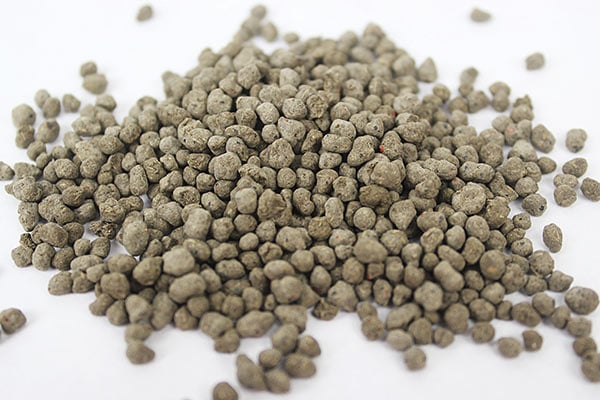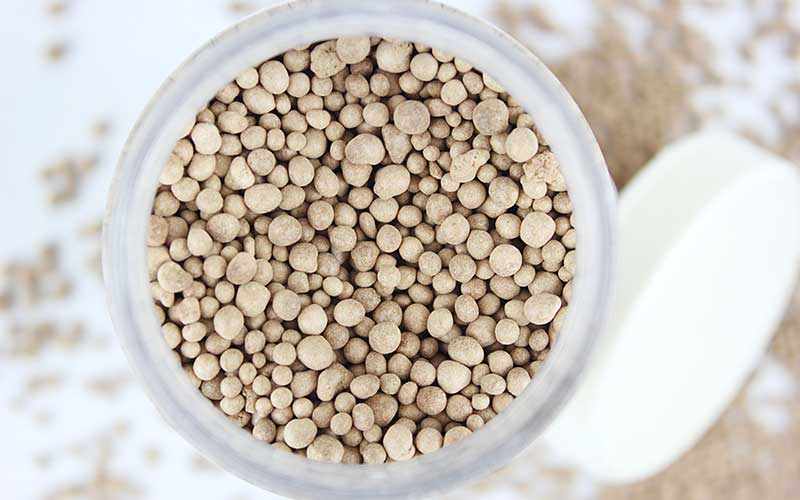While much of the soil health discussion has centered around fertilizer use, soil amendments and conditioners are an equally critical tool in soil restoration efforts and our ability to feed the anticipated 9 billion people inhabiting the earth by 2050. While fertilizers deliver the nutrients plants need for crops to grow, soil amendments provide the environment for fertilizers to be effective.
Soil health has become a topic of increasing importance in recent years as scientists call for action around restoring the world’s deteriorating soils; soils around the globe have become depleted of the materials necessary to promote a flourishing soil environment and the subsequent nutritious crops the booming population requires them to produce.
With awareness around this critical issue becoming more prevalent, soil amendments have seen increasing use in recent years and continue to be on an upward trend; a 2017 report by Research and Markets projected that global demand for soil conditioners would see a CAGR of 8.16% up to the year 2022.
How Soil Amendments Improve Soil
The physical, chemical, and biological makeup of soil is the basis for a healthy soil and its ability to not only produce crops, but to withstand weathering and erosion as well. This is where soil amendments and conditioners are so pivotal.
The terms soil amendment and soil conditioner are often used interchangeably and cover a broad range of additive types – all either organic (derived from something living) or inorganic. Within each category, a wide range of products are available, but in general, they all work to improve the soil in some way.
This is different from fertilizers in that the focus is not necessarily in providing nutrients to the soil, but rather, improving the soil environment to maximize its potential for growth, though in some cases nutrients are provided. Ultimately, soil amendments can help to restore tired soils to a revitalized state that will support growth and help to maintain this crucial resource.
Frequent objectives for soil amendments are listed below, along with commonly used sources for each.
Raise or Lower Soil pH
The pH of soil is a key factor in promoting proper growth. Soil that is too acidic or too alkaline cannot support fruitful production, because soil pH influences a variety of components within the soil. When soil is not within the ideal pH range, plants may experience nutrient deficiency (no matter how much fertilizer is applied), aluminum toxicity, or other growth-inhibiting issues.
Common Soil Amendments for Adjusting Soil pH
Soil pH is adjusted through the provision of limestone or sulfur; lime raises soil pH, while sulfur lowers it. In general, most plants prefer a soil pH somewhere in the neutral range, though some plants may prefer a more acidic or alkaline soil than others.

Limestone soil amendment produced in the FEECO Innovation Center
Add organic matter to soil
Organic matter provides a range of benefits to soil, fostering a healthier and more productive soil environment. Benefits organic matter can offer include:
- Reduced potential for erosion
- Better soil structure
- Improved water retention
- Enhanced nutrient holding and uptake
- Increased microbial activity
Soil Amendments for Adding Organic Matter to Soil
Organic matter can be added through an array of different materials. Among them:

Manure-based fertilizer produced in a FEECO on-farm manure granulation plant
Improve the physical structure (soil porosity, drainage, permeability, etc.)
Soil structure and texture influence various factors that affect soil’s ability to promote growth. This includes permeability, drainage, porosity and more. These factors in turn affect nutrient and water holding capabilities, the ability of roots to push out into soil during growth, and many more functions.
Soil Amendments for Changing Physical Structure of Soil
Gypsum, perlite, and vermiculite are all used to aerate soil. Gypsum is often used to loosen compacted or clay soils to improve air filtration, water and nutrient movement, etc.
Various sources of organic matter, as well as biochar, can also help to improve soil structure.
Supplementing Nutrients
In addition to the functions listed above, soil amendments are also used to supplement nutrients not provided as part of a fertilizer program, or, as an organic fertilizer source. This is often seen with calcium, which plants rely on for structural strength, enzymatic functions, and more.
Soil Amendments for Supplementing Nutrients
A wide range of products can be used to supply nutrients to soil, depending on what is needed. This might include:
- Bone meal – a source of calcium and phosphorus
- Blood meal – a source of nitrogen
- Feather meal – a source of nitrogen
- Gypsum – a source of calcium
- Iron (provides iron)
It’s important to note that there is often overlap in the functionality of soil amendments, with many serving multiple functions. Furthermore, the relationship between nutrients, soil structure, environmental factors, and the various amendments is highly complex; a change in one will often influence a change in another.

Gypsum soil amendment produced in the FEECO Innovation Center
Soil Amendment Production
Soil amendments may be produced as a singular product, or added as a component in another product, such as a fertilizer.
Although powdered and liquid forms may be available for some soil amendments, most are produced in granular form for easy handling and application, dust reduction, and to allow for spreading with standard equipment.
When produced as a granule, soil amendments are processed using tumble growth agglomeration – a technique that tumbles fines in the presence of a liquid binder to cause accretion and granule formation. This is typically carried out through either a drum granulation or disc pelletizing setup, with an optional preconditioning stage in a mixer, as shown in the process flow diagram below.
Image: Typical disc pelletizing setup with a preconditioning stage as well as a cooling step.
In some cases, the soil amendment may also be produced using a mixer-dryer setup, where binder and feedstock are incorporated into a pin mixer or pugmill mixer for a specific retention time that results in a homogeneous mixture and rough agglomeration. A rotary dryer (or fluid bed dryer) is required in all scenarios in order to reduce the moisture content of the “green” pellets into their final, cured form.
A number of variables are adjusted and fine-tuned during processing in order to reach the targeted set of particle characteristics that a producer desires. This often includes:
- Solubility/Dispersion
- Crush strength
- Attrition/Dust generation
- Moisture content
- Bulk density
- Particle size distribution
- Flowability
- Ease of handling and spreading
Soil Amendments in Fertilizers
Due to the importance of soil amendments, a growing trend is being seen in the fertilizer industry: the incorporation of amendments into fertilizer formulations.
An increasing understanding of soil health and nutrient management, combined with advances in fertilizer production, have prompted a new generation of specialized fertilizer products; producers are incorporating amendments into fertilizer products in order to suit the unique needs of a given region, soil condition, or application.
This has been seen first-hand in the FEECO Innovation Center, where process engineers work with producers on process and product development for custom fertilizer and soil amendment products:
“We have always been working with customers to develop specialty fertilizer products in our testing facility,” says Nick Reckinger, FEECO BioResource Sales Engineer, “but the past few years, we’ve really seen increasing interest. Producers are looking to create site-, region-, or crop-specific products to optimize nutrition and soil health. They’re bringing all sorts of ideas to the table. It’s been very rewarding to be a part of that development process.”
Soil amendments can be incorporated into fertilizers in a variety of ways depending on the production process. In the case of disc or drum granulation, they can be included as a raw feedstock material that gets homogeneously mixed with other components to form all-in-one granules.
Alternatively, they may be included as the liquid binder. Molasses, for example, can be used to increase microbial activity. Molasses also often serves as a natural liquid binder in the agglomeration/granulation process to promote granule formation.
Conclusion
Soil amendments and conditioners work to improve soil in a variety of ways – from physical structure, to controlling pH – each essential to revitalizing deteriorating soils around the globe so they can continue to support a growing population. Without soil amendments, fertilizers cannot impart their full effectiveness, making soil amendments crucial in the fight against degrading soils.
The ability to combine fertilizer and soil amendment products into tailored, high-performance soil solutions looks to be especially promising, with a significant amount of research and development ongoing.
FEECO has been serving the fertilizer industry in feasibility testing, process and product development, and custom equipment and systems since 1951. Our Innovation Center is the world’s leading testing facility for developing the next generation of fertilizer, soil amendment, and combination specialty products.
For more information, contact us today!



